
If you’ve ever found yourself scratching your head, staring at that one odd corner of your living room, or lamenting over spaces that just don’t quite fit the ‘normal’ mold, then you’re in the right place! We’ve all encountered those peculiar nooks, crannies, and oddly shaped rooms that seem impossible to work with. But what if I told you that your ‘awkward’ living room could be your home’s most significant asset?
Dive into my world as I unravel 15 Awkward Living Room Layout Ideas that not only embrace the unconventional but celebrate it. Through creativity and a dash of audacity, I promise these designs will leave you wondering why you ever saw them as ‘challenges’ in the first place. So, grab a cozy drink, sit in your favorite (awkwardly placed) chair, and let’s journey into the realm of the beautifully unconventional. Here’s to loving the quirks of our homes!
Related Articles –
- 30 Grey Couch Living Room Ideas For Every Style
- 30 Beautiful Living Room Farmhouse Wall Decor Ideas
- 35 Studio Apartment Ideas To Make The Most Of Your Space

1. Use Furniture Or Screens To Divide The Space Into Distinct Areas
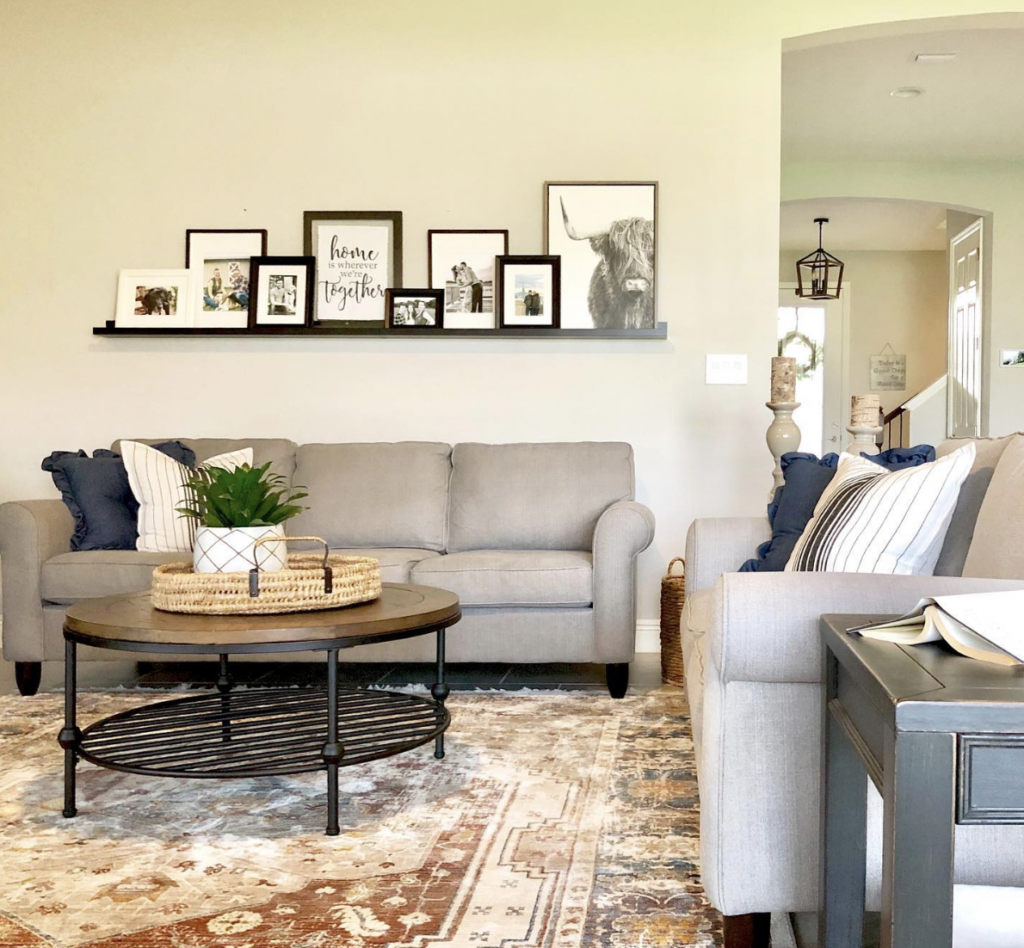
Image by nd.home.design
A well-placed sectional sofa can create a cozy conversation area or a TV-watching zone. The L-shape of a sectional naturally establishes a boundary, which can help demarcate different functional areas within a larger space.
Read – 30 Ideas For Sectional In Small Living Room
2. Consider Angling Some Furniture
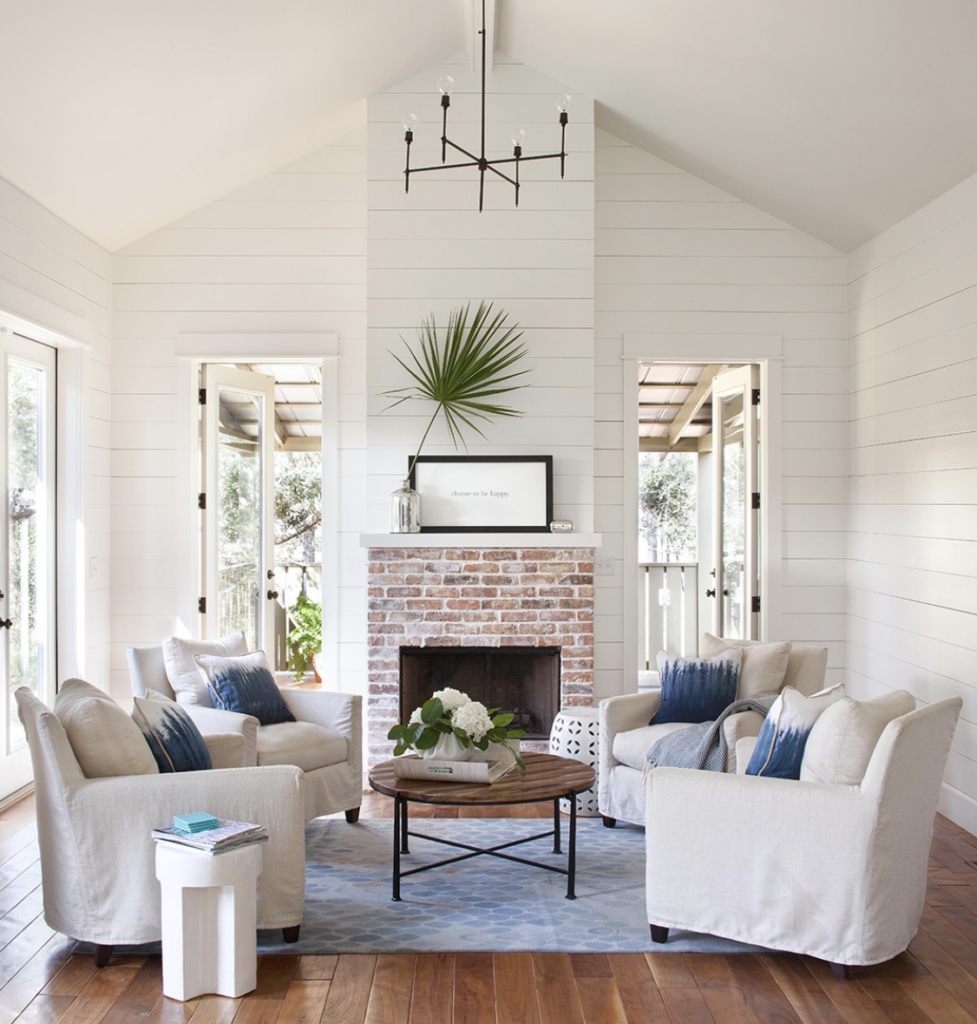
Image by uploftinteriordesign
Angled furniture can redirect focus away from the odd corners or imperfections of a room. This arrangement draws the eye in a deliberate direction, often making spaces feel more intentional and curated.
3. Use Rugs To Define Separate Areas In The Living Room
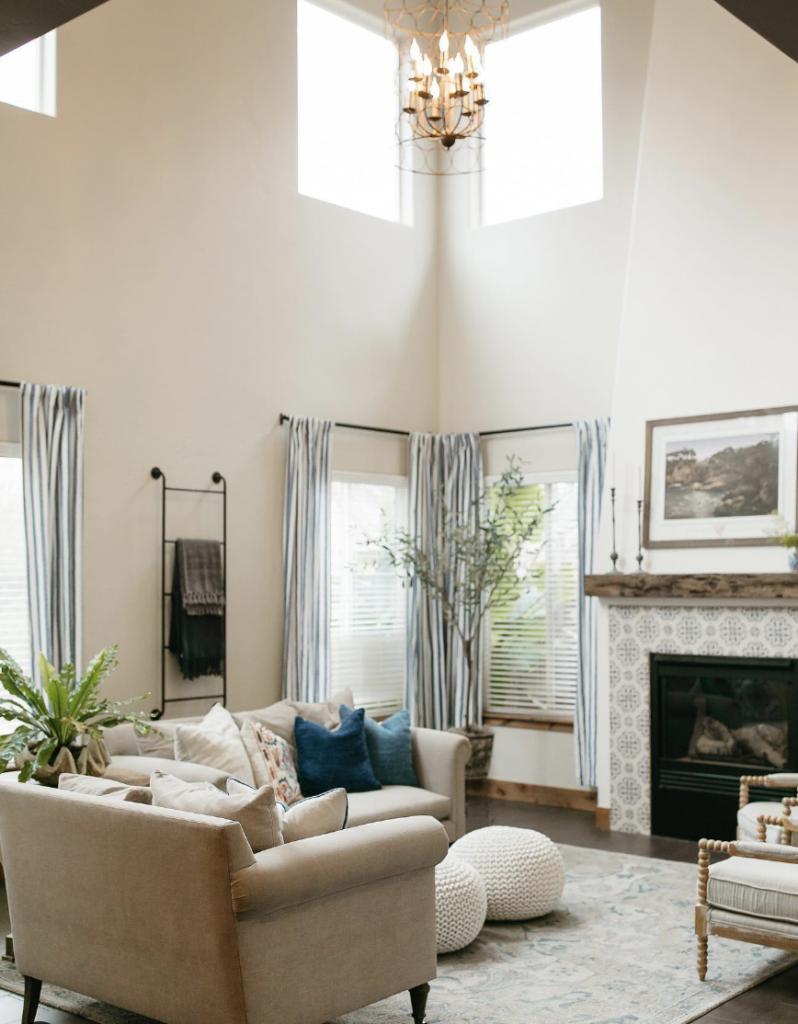
Image by graceddesigns
When tackling awkward living room layouts, one of the most influential and stylish solutions is to use rugs. But rugs aren’t just for aesthetic appeal; they play a pivotal role in delineating spaces, especially in rooms that have unconventional dimensions or serve multiple functions.
Expert tip by TCH: In awkward spaces, rugs can be a visual tool to set boundaries or zones. Think of them as the groundwork for your room’s layout, giving cues on where each activity or function should occur.
“In another experience, a colleague faced the challenge of a long, narrow living room that seemed to stretch endlessly. It was difficult to determine where the seating area should end and another function, like a reading nook, should begin. The solution? Area rugs. By placing a large rug in the center where her main seating was, she effectively “zoned” that part of the room. A smaller, contrasting rug then highlighted a quiet reading corner by the window. The result? A living room that felt structured and curated, despite its unusual shape.”
4. Using Mirrors Can Make An Awkward Room Seem Larger And Brighter.
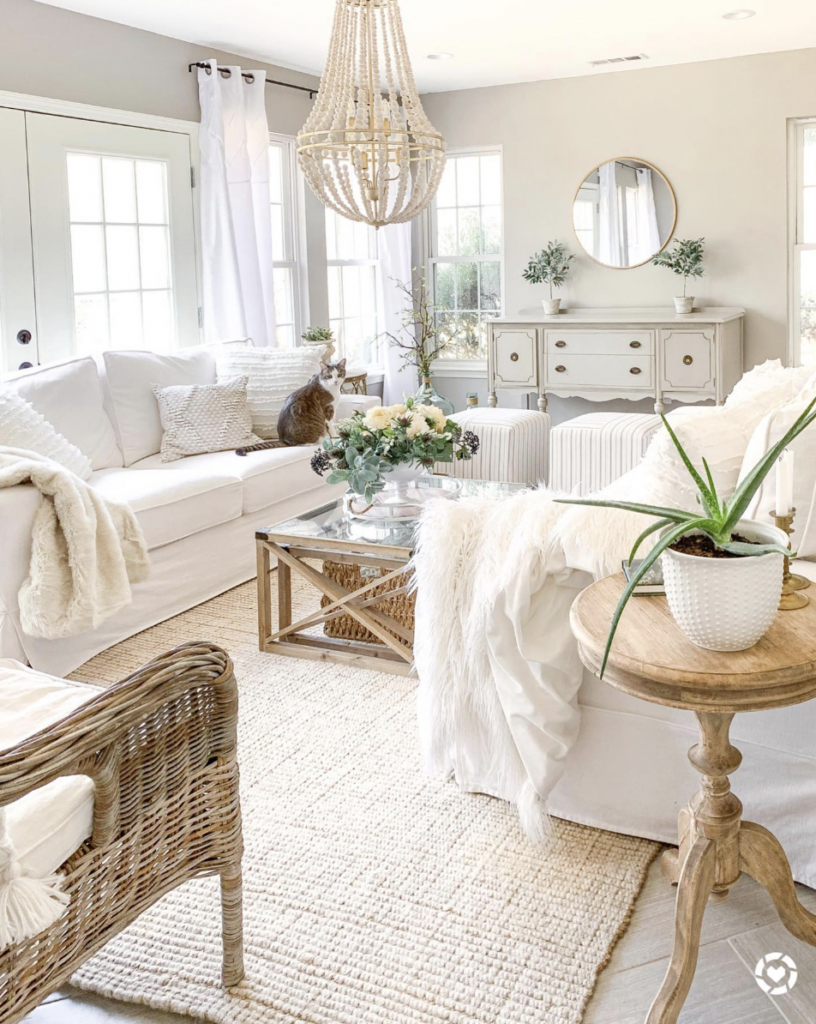
Image by homestoriesatoz
Mirrors have a magical ability to expand a space visually. By reflecting light and other parts of the room, they create the illusion of depth, making areas seem far more significant than they indeed are. This is especially helpful in rooms with limited or oddly placed windows, as mirrors can effectively double the amount of light pouring in.
5. Use Art To Draw Attention To Or Away From Certain Areas Of The Room
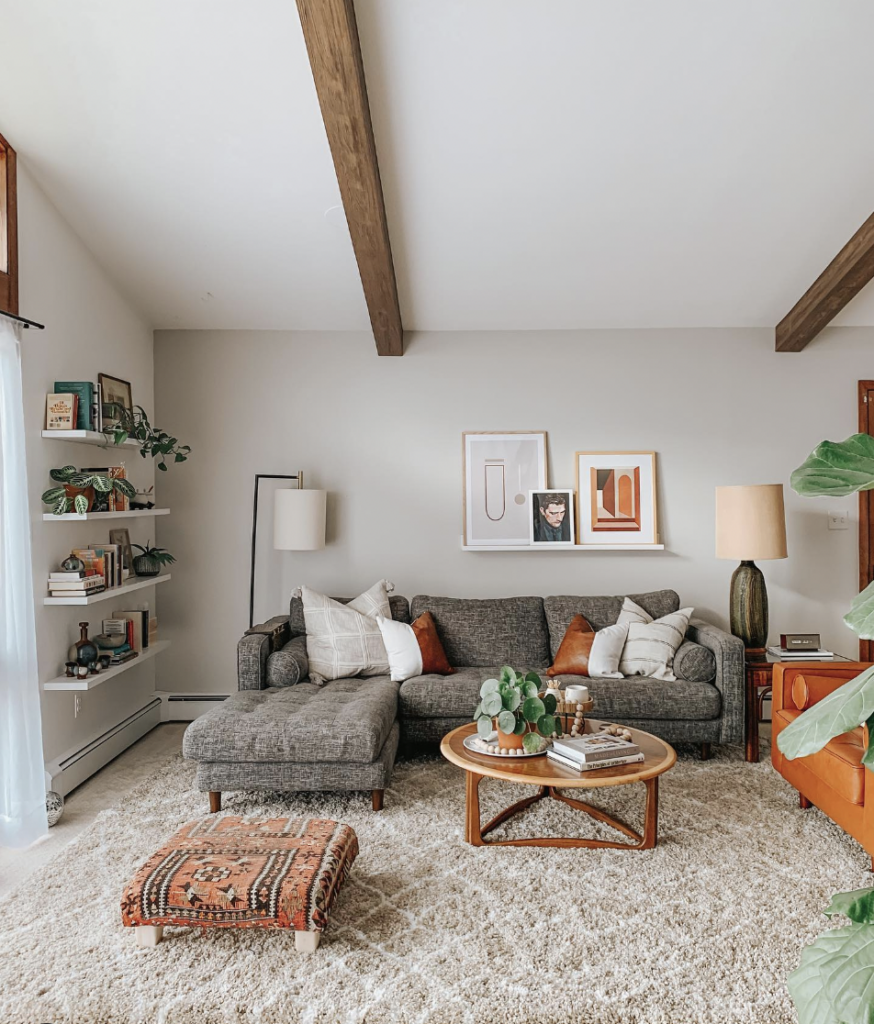
Image by dreamgreendiy
Art isn’t just about the focal points; it’s about creating balance. In an awkward living room, balance can often feel off. Use art pieces of varying sizes to redistribute visual weight. For instance, a larger artwork can balance out a bulky sofa on the opposite side. At the same time, a series of smaller prints can fill in sparse areas without overwhelming them.
6. Consider Flexible Seating Options
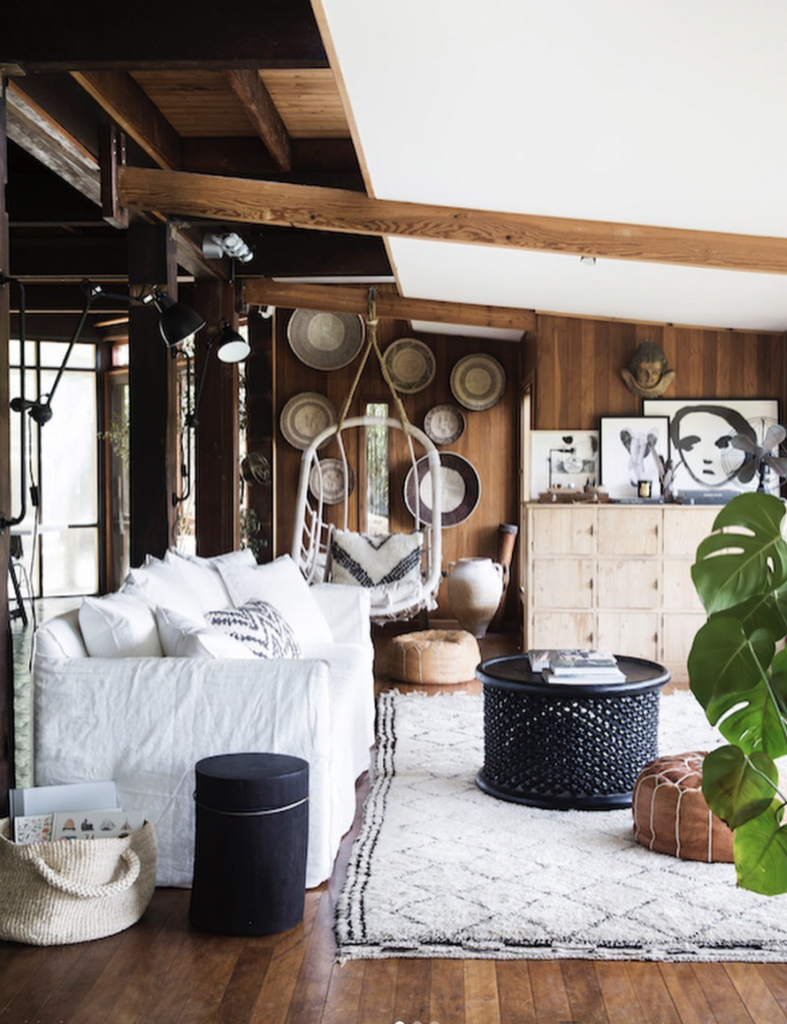
Image by nataliewalton
In irregular living rooms, traditional furniture arrangements can often feel forced, leaving certain areas underutilized or crowded. Flexible seating, on the other hand, provides the freedom to adapt and reconfigure based on the occasion, be it a quiet evening with a book or a lively gathering with friends.
7. Incorporate Mix Of Large And Small Pieces

Image by taylorborsari.inc
While our first instinct might be to choose smaller furniture for a challenging space, a room filled with only diminutive pieces can end up feeling cluttered or like it’s missing an anchor. By contrast, incorporating one or two more oversized items, like a statement sofa or a bold coffee table, provides a grounding element. These pieces act as focal points, drawing the eye and offering a counterbalance to more miniature furniture or decorative elements.
Expert tip by TCH: Look for furniture that can serve multiple purposes or change shape, like modular sofas, nesting tables, or ottomans with storage. This gives you flexibility in arranging your space and allows you to adapt to different needs and occasions.
“I once visited a friend who lived in a compact apartment with a peculiar L-shaped living room. Traditional furniture placement simply didn’t work for her space. Instead of complaining about the layout, she embraced it. Using a convertible sofa that could be reshaped into different configurations, she adjusted its form depending on the occasion. When she had guests over, it became an L-shaped sofa to fit the room’s shape. On movie nights, she’d transform it into a cozy bed for lounging. This adaptable approach meant her space always felt inviting and intentional.”
8. Utilize Vertical Space For Storage Or Decoration

Image by our_holly_house
In many modern homes and apartments, vertical space is an underutilized asset. Tapping into this area not only maximizes your storage options but also draws the eye upwards, creating a sense of spaciousness and grandeur even in the most cramped quarters.
Expert tip by TCH: In rooms where horizontal space might be limited or awkward, consider leveraging the vertical. Wall-mounted elements, tall furniture pieces, and ceiling decor can help balance the room and make it feel complete.
“My neighbor had a living room with exceptionally high ceilings, but the room’s square footage was quite limited. This could have made the room feel cavernous and unwelcoming, but instead, he played to its strengths. Installing tall bookshelves and hanging plants from the ceiling, he drew the eyes upwards. This not only made use of the available vertical space but also added warmth and personality to the room. Plus, by mounting his TV on the wall and using wall-mounted cabinets, he freed up floor space, making the room feel larger than it was.”
9. Benches Can Be A Versatile Furniture In Fill In Empty Corners
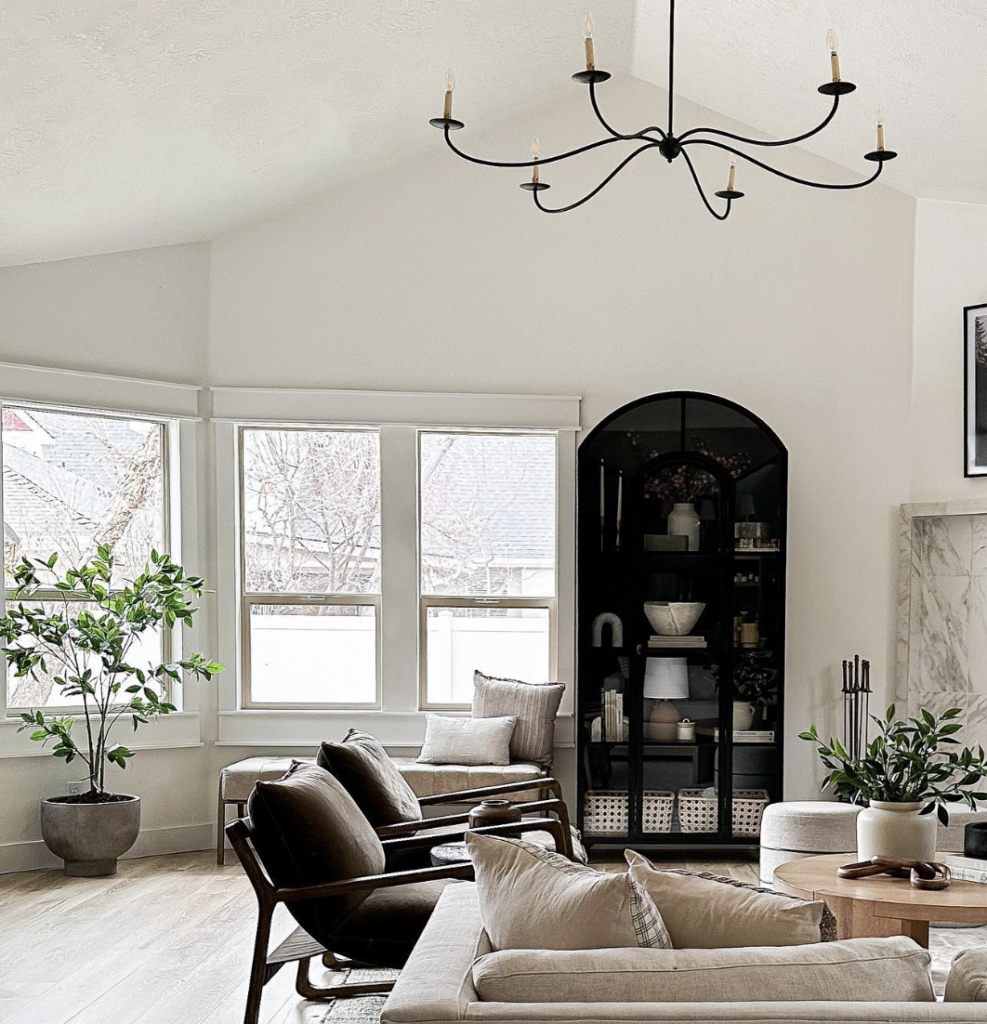
Image by mintandpinedesign
Benches are a godsend for awkward living room layouts. Their elongated design can perfectly fit into nooks and crannies, providing not just seating but also a design solution that feels intentional and stylish. When selected with care, a bench can complement the room’s aesthetic, acting as a functional piece of art that ties the space together.
10. Make Sure To Have Layered Lighting
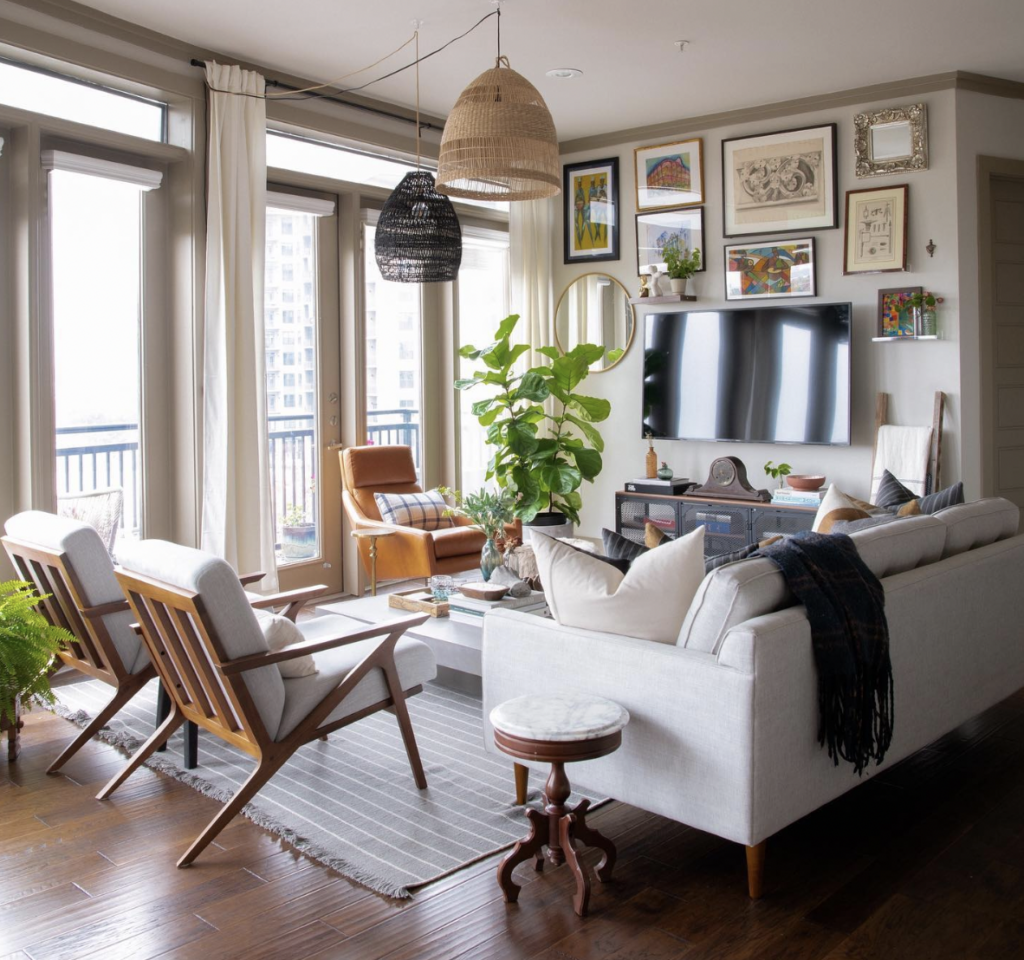
Image by made_designcompany
Accent lighting highlights specific areas or features of your living room. It can be used to draw attention away from the room’s awkwardness and focus on its strengths. Track lights, picture lights, or even string lights can be used to spotlight artwork, architectural features, or unique decor pieces.

11. Do Not Overcrowd The Space
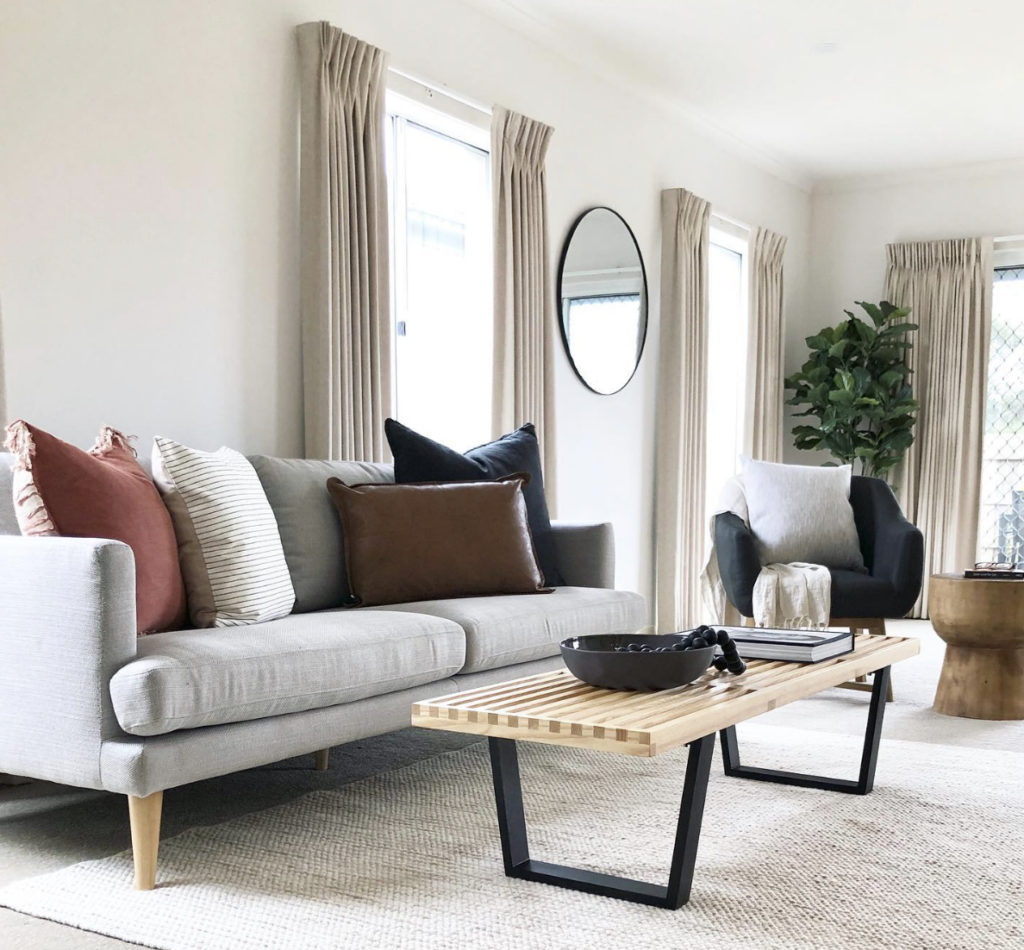
Image by southeaststylingco
Overcrowding not only makes a room feel claustrophobic but also accentuates its flaws. Instead, allowing for a ‘breathing room’ between furniture and the decor can create openness, making the room feel larger and more inviting.
12. Play With The Colors
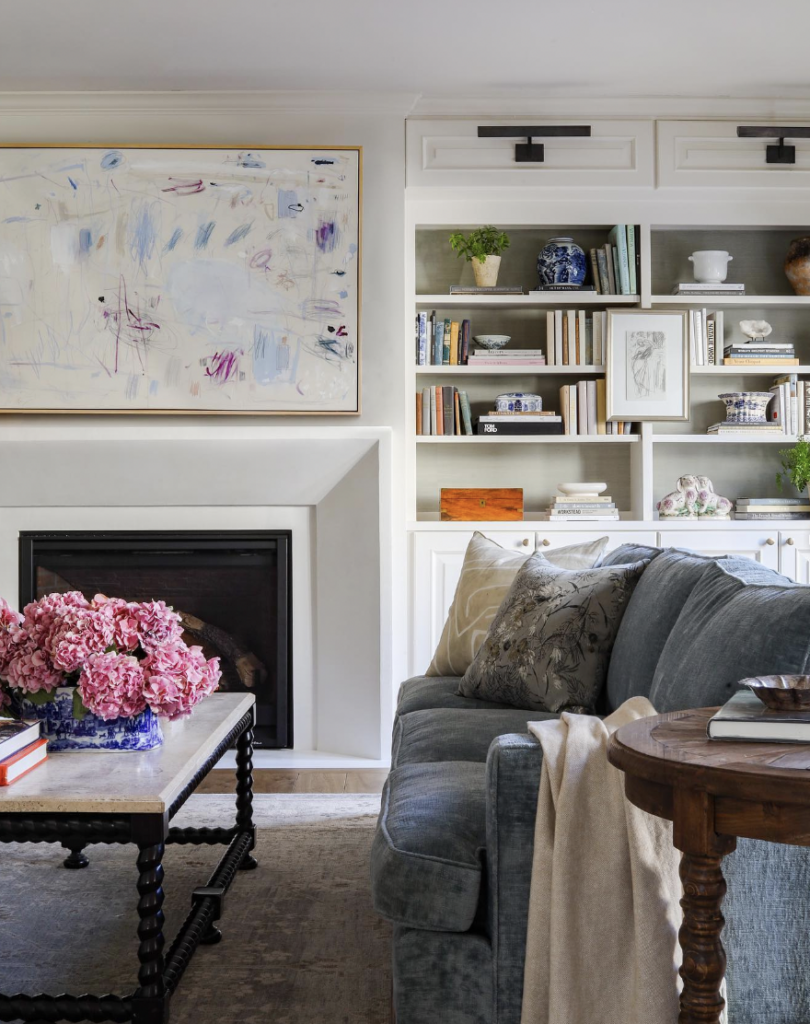
Image by shannoncraindesign
When faced with an awkward living room layout, one might feel limited in furniture arrangement and decor choices. However, an often overlooked and powerful tool in transforming such spaces is the use of color. Lighter hues, like soft whites, pale blues, or muted yellows, can make a cramped or oddly shaped room feel more expansive and airy. On the other hand, deeper shades like navy, forest green, or rich burgundy can pull together vast, sprawling spaces, making them feel more intimate and cozy.
13. Opt For Slim Furniture

Image by clariemurrayinteriors
The primary advantage of slim-profile furniture is its ability to free up floor space. Unlike bulky pieces, which can dominate a room and make it feel cluttered, slim furniture offers functionality without overwhelming the area. This is especially beneficial in narrow or small spaces, where every inch counts.
14. Add Lamps Or Plants In The Awkward Corners

Image by jomelinteriors
For those who love a touch of nature indoors, plants are a perfect choice. Tall potted plants, like a fiddle leaf fig or a monstera, can fill up an empty corner and bring life and vibrancy to the space. Not only do they provide visual interest, but they also help improve indoor air quality. If you’re concerned about light, many plants thrive in low-light conditions, making them perfect for those dimmer corners of your home.
15. Make Cozy Corner Nooks
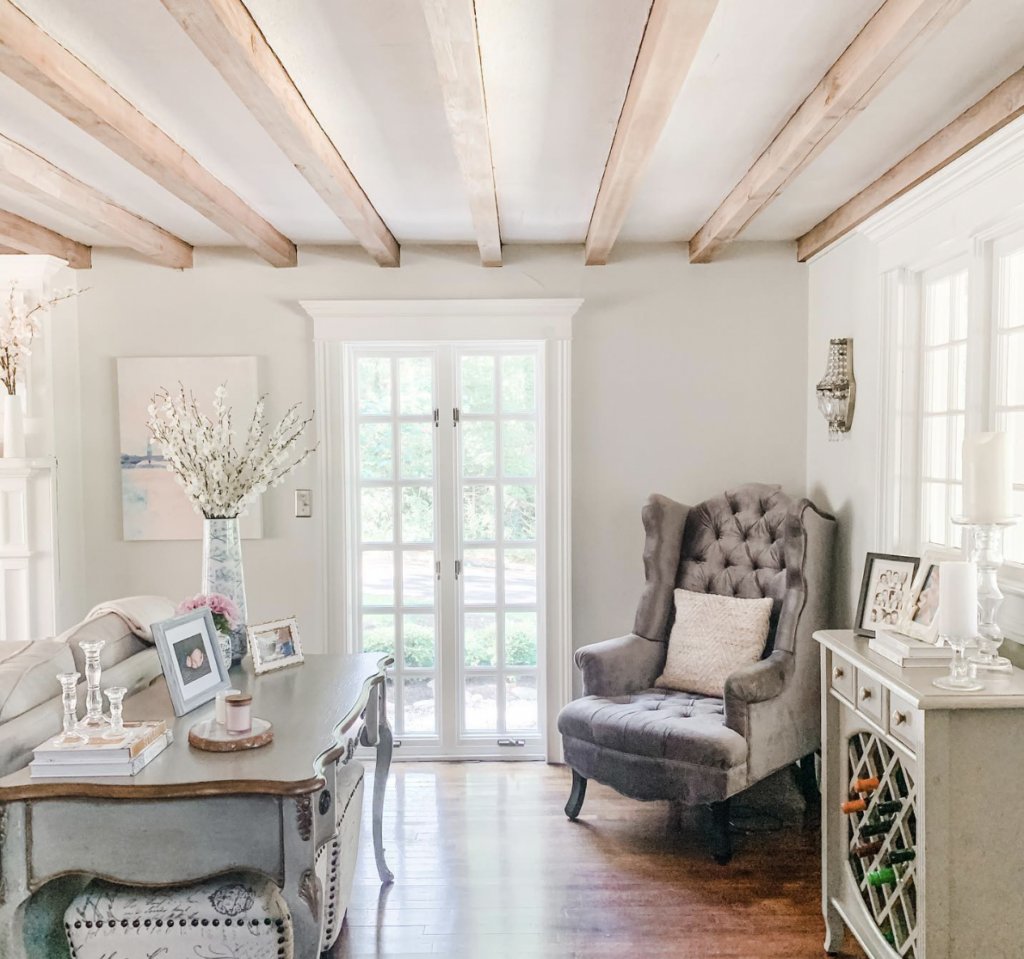
Image by claudinearogers
Corner nooks, by their very nature, exude a sense of intimacy and coziness. Whether it’s a tucked-away reading spot or a dedicated plant paradise, these nooks can be the hidden gems of your living room.

FAQS
How to arrange furniture in an awkward living room with a fireplace?
When arranging furniture in a living room with a fireplace, especially if the layout is awkward, identify the fireplace as your focal point. Once established, align your main seating area, such as a sofa or a pair of chairs, in a way that allows those seated to enjoy the warmth of the fireplace and the view of the room. If space is tight, consider placing smaller furniture pieces perpendicular to the main seating to maximize space while maintaining flow. Don’t forget to ensure a safe distance between the furniture and the fireplace, and make sure traffic paths are clear.
Where should a couch be placed in a living room with a fireplace?
In a living room with a fireplace, the couch should ideally be placed facing the fireplace, emphasizing it as the primary focal point. If the room’s size allows, position the sofa either centered in front of the fireplace or slightly off-center if accommodating other seating. If the fireplace is in a corner, an angled placement for the couch can create a cozy, inviting setup. Always ensure a comfortable distance between the sofa and the fireplace for safety and warmth without overwhelming heat.
How do you style an awkwardly shaped living room?
Styling an awkwardly shaped living room requires a blend of creativity and practicality. Begin by identifying any natural focal points apart from architectural ones, such as windows or built-in features. Utilize flexible and multifunctional furniture that can be adjusted to fit the room’s unique shape. Embrace asymmetry to balance the room, and use area rugs to define distinct zones or seating areas. Remember, wall-mounted and vertical storage can free up floor space, and strategic lighting can highlight the room’s best features. Ultimately, embrace the room’s quirks and turn them into standout, stylish components.
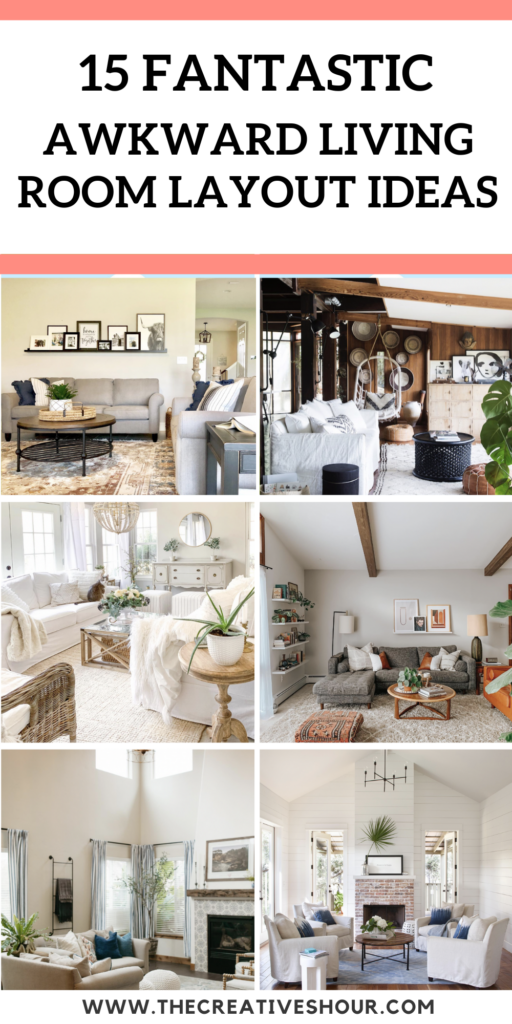
If you love these ideas, don’t forget to pin the above image to your “Home and Garden” board.
